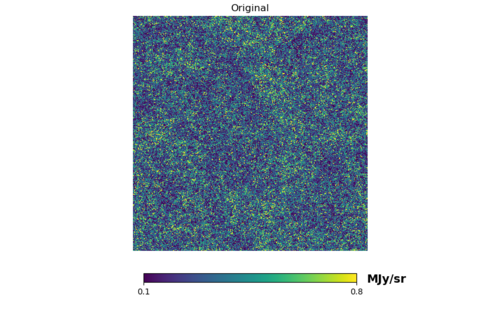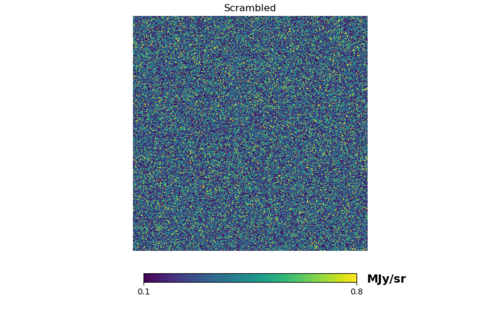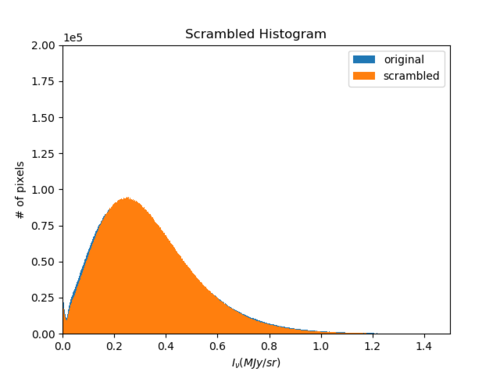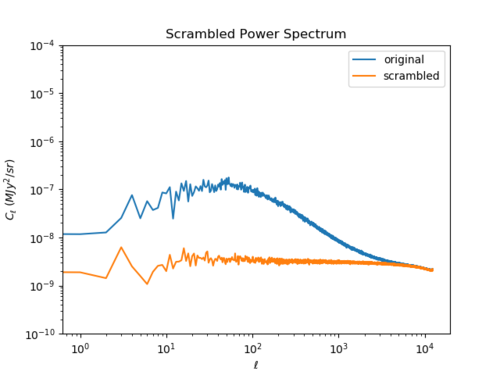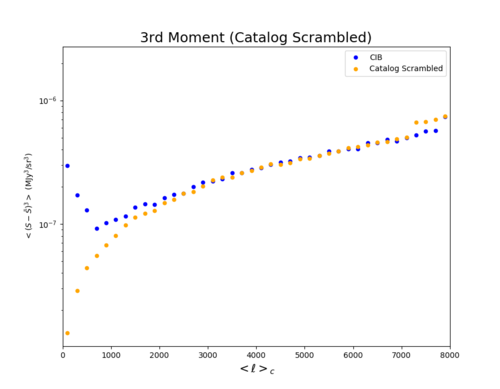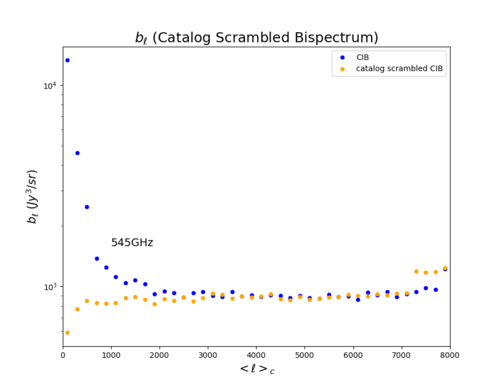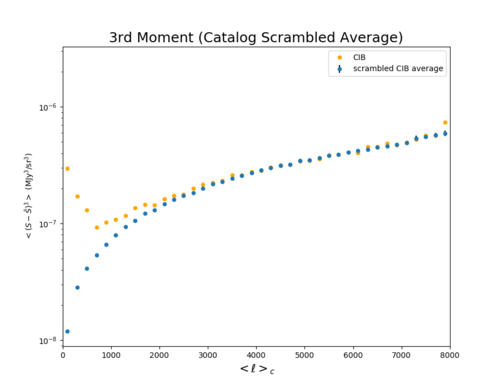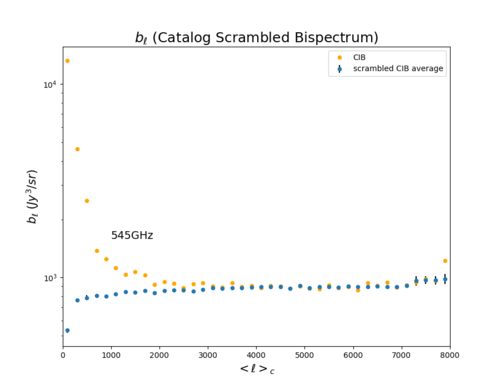July 3rd, 2019 - CIB Halo Scramble: Solved (Edited)
It seems we at last have a trustworthy version of the halo-scrambled CIB map; I made the map by scrambling the catalog itself separately then saving it into a new catalog file. I then used the 'halo2fluxmap' code with the new catalog. (Previously, I had been reading in the original catalog in the halo2fluxmap code, then tried scrambling the halos, which failed miserably.)
This post briefly looks into its basics/statistics compared to the original CIB map.
Maps (Left: original Right: scrambled)
-Full Sky
-Zoomed (5 deg by 5 deg (0~5 longitude and latitude))
Basic Statistics (Left: original Right: scrambled)
-Statistics
-Histograms
-Power Spectra
Nothing special is to be noted up until here; the true scrambled map looks much similar to the original CIB than the incorrect realizations (where the majority of pixels were very low in intensity with few extremely bright pixels).
3-point function (Left: 3rd Moment Right: Reduced Bispectrum (Equilateral))
Now the reduced bispectrum (for the scrambled map) behaves exactly as we had anticipated; it has a roughly constant value throughout all ells, matching the original CIB's bispectrum in the high ell Poissonian regime.
Anomaly at High [math]\displaystyle{ \ell }[/math] for Scrambled Reduced Bispectrum (Solved)
I made 5 different scrambled halo catalogs, and it seems that the anomaly at high [math]\displaystyle{ \ell }[/math] was only present for the one of the catalogs (I am not 100% sure if I have the error bars right). The very last value (at around [math]\displaystyle{ \ell = 8000 }[/math]) could be an anomaly however (maybe an nside effect?).


